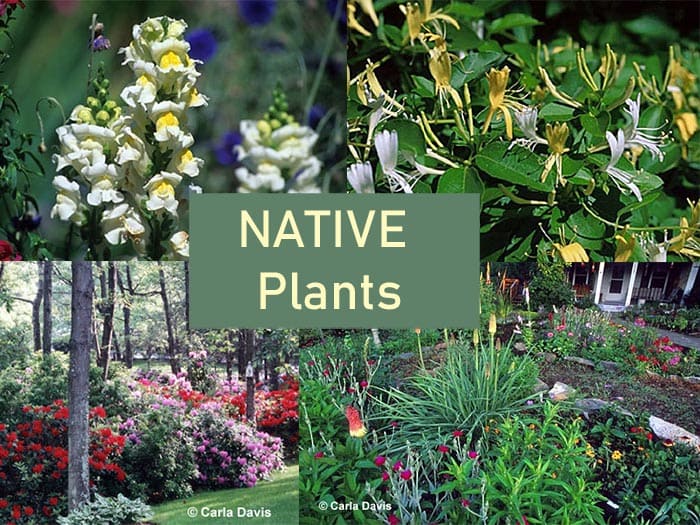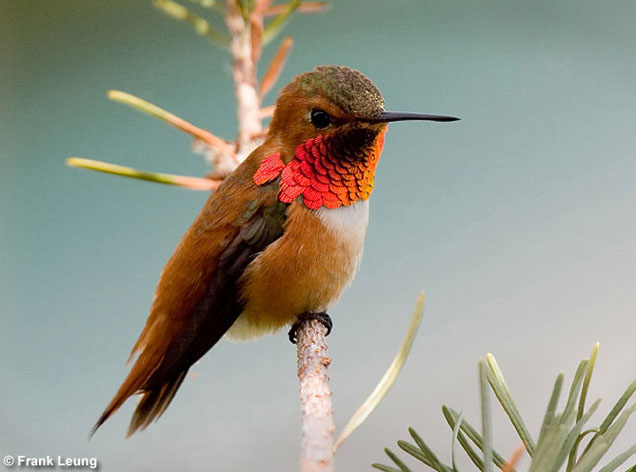
North Carolina Plants for Wildlife Habitat & Conservation Landscaping
The Following are WindStar Wildlife Institute’s plant recommendations for wildlife habitats in North Carolina:
Trees
Tall–Canadian Hemlock; White, Red, Chestnut and Post Oak; Black Cherry; Shagbark and Pignut Hickory; Red and Sugar Maple; Yellow Buckeye; Yellow, Sweet and River Birch; Beech; Tulip Tree; Sycamore; Red Spruce; American Linden
Medium/Small–Serviceberry; Eastern Redbud; Flowering and Pagoda Dogwood; American Holly; Southern Crabapple, Eastern Red Cedar; American Hornbeam; Washington Hawthorn; Common Sassafras; Sourwood; American Plum; Persimmon; Blackhaw Viburnum
Shrubs
Short — New Jersey Tea; Carolina and Swamp Rose; Cranberry; Lowbush Blueberry; Maple-leaf Viburnum
Medium — Red and Black Chokeberry; Sweetshrub; Silky Dogwood; Hazelnut; Bush Honeysuckle; Common Winterberry; Mountain Laurel; Spicebush; Sweet and Flame Azalea; Elderberry; Coral Berry; Highbush Blueberry
Large — Tag Alder; Mountain Winterberry; Mock Orange; Smooth Sumac; Silky Willow; Arrowwood
Wildflowers
Butterflyweed; Carolina Phlox; Wild Columbine; Jack-in-the-pulpit; Swamp Milkweed; White and Late Purple Aster; Wild Indigo; Pink Turtlehead; Coreopsis; Joe-Pye Weed; Shooting Star; Wild Geranium; Sunflower; Jewelweed; Blazing Star; Cardinal Flower; Bee Balm; Black-eyed Susan; Winkle-leaf Goldenrod

Hummingbirds are amazing birds that can be commonly seen in North Carolina.
Groundcovers
Wintergreen; Wild Ginger; Mouse-eared Coreopsis; Partridge Berry; Chalice, wild Blue and Creeping Phlox; Foamflower
Vines
Dutchman’s Pipe; Crossvine; Trumpet Creeper; Virgin’s Bower; Coral Honeysuckle; Passion Flower; Fox Grape; Virginia Creeper; Coral Honeysuckle
Grasses
Indiangrass; Little Bluestem; Eastern Gama Grass; Bottlebrush Grass; Broomsedge; Switchgrass; River Oats; Oat Grass; Pennsylvania and Plantain-leaved Sedge; River Cane
The eastern two-thirds of North Carolina is characterized as coastal plain and tidewater. Moving west, the next two-fifths of North Carolina, about 200 miles wide, consists of a piedmont plateau. In the west, the land slopes upward from gentle to rugged rolling hills to the high southern Appalachian Mountains containing the Blue Ridge and Great Smokey Mountains. The North Carolina Wildflower Preservation Society can provide lists of plants for a specific region.
For more information on improving your wildlife habitat, visit the WindStar Wildlife Institute web site. On the web site, you can also apply to certify your property as a wildlife habitat, register for the “Certified Wildlife Habitat Naturalist e-Learning course, become a member and sign up for the FREE WindStar Wildlife Garden Weekly e-mail newsletter.

